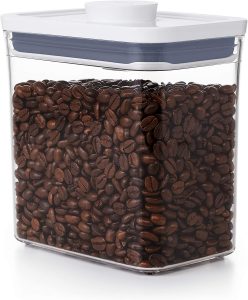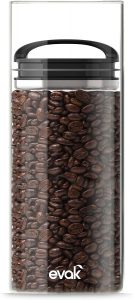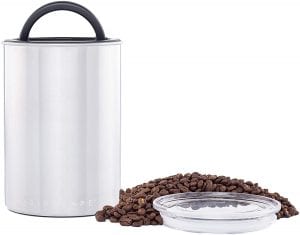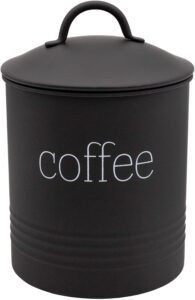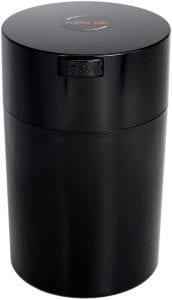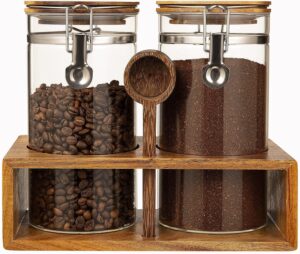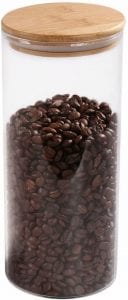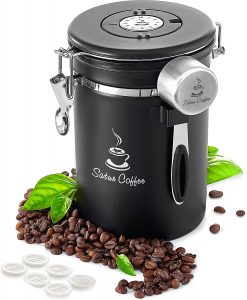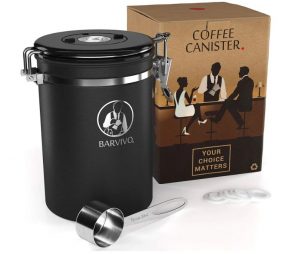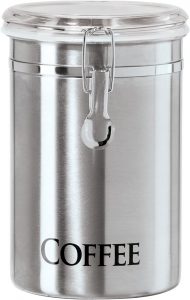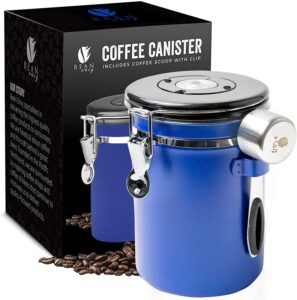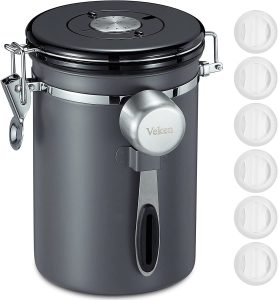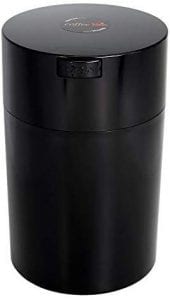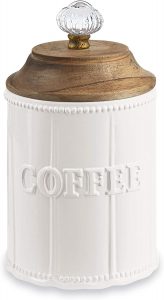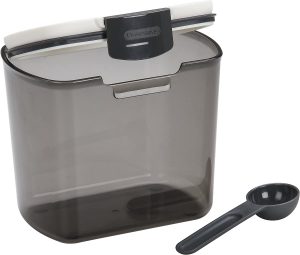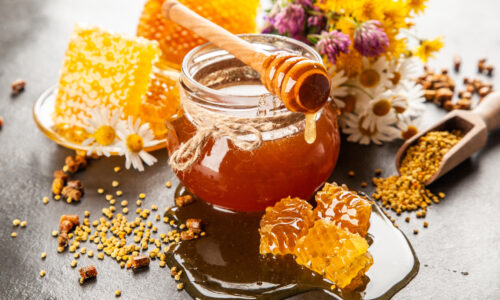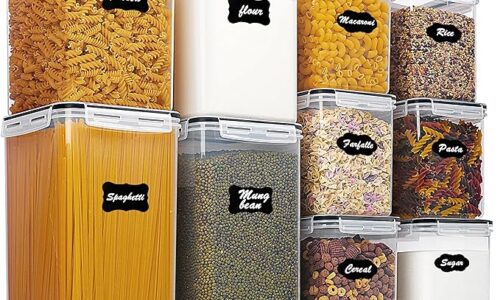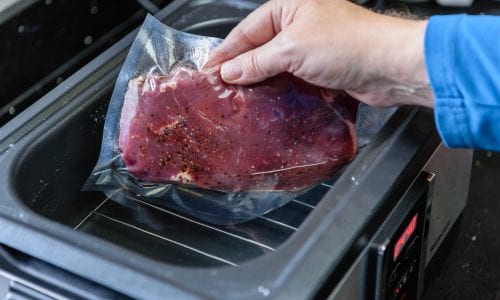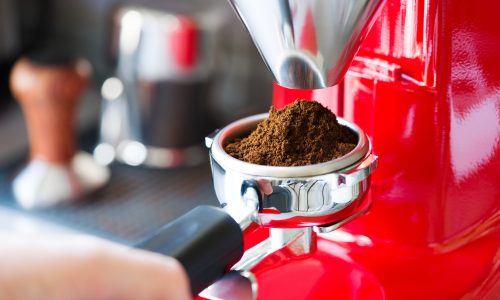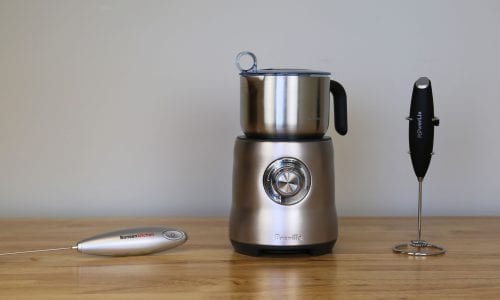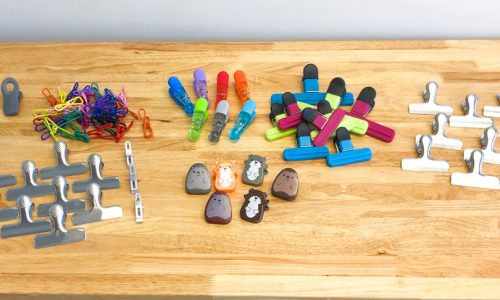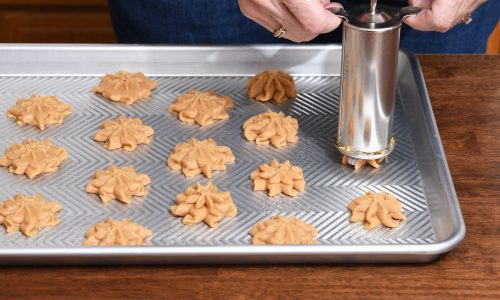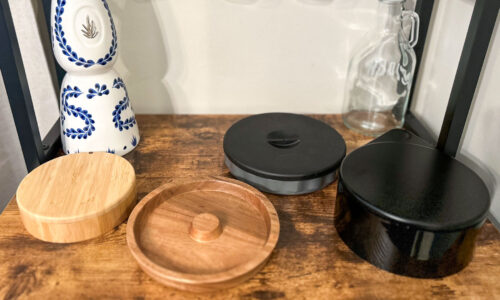The Best Coffee Canisters
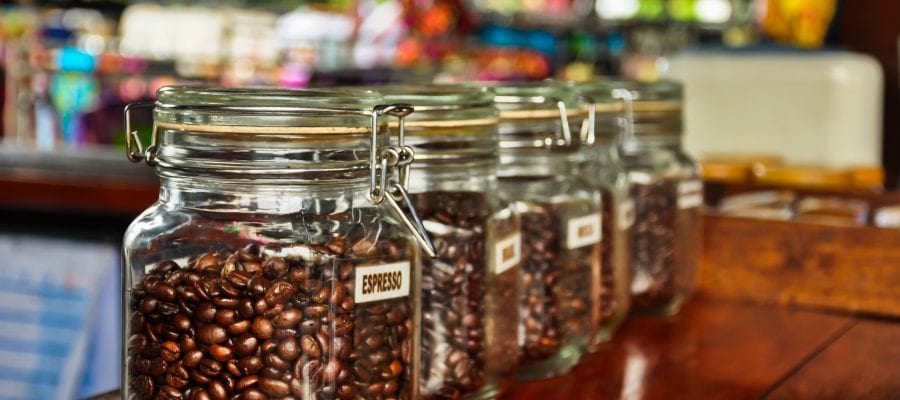
Our Review Process
Don't Waste Your Money is focused on helping you make the best purchasing decision. Our team of experts spends hundreds of hours analyzing, testing, and researching products so you don't have to. Learn more.
Our Picks For The Top Coffee Canisters
- 1. OXO BPA-Free Plastic Coffee Canister
- 2. Prepara Odor Resistant Coffee Canister For Ground Coffee
- 3. Planetary Design Airscape CO2 Coffee and Food Storage Canister
- 4. AuldHome Retro Iron Coffee Canister
- 5. Tightpac America NSF Certified Coffee Canister For Ground Coffee
- 6. Yangbaga Decorative Countertop Coffee Canisters
- 7. 77L Glass & Wooden Lid Coffee Bean Canister For Ground Coffee
- 8. Star Coffee Stainless All-In-One Coffee Canister
- 9. BARVIVO Non-Toxic Aroma-Filled Coffee Canister
- 10. Oggi Food-Grade Moisture Free Coffee Canister
- 11. Coffee Gator BPA-Free Fresh Seal Coffee Canister
- 12. Bean Envy Multipurpose Decorative Coffee Canister
- 13. Veken Airtight Rotating Date Coffee Canister
- 14. Tightpac America NSF-Certified Aroma Maintaining Coffee Canister
- 15. Mud Pie Ceramic Coffee Canister For Ground Coffee
- 16. Progressive Large Coffee ProKeeper Storage Container
Nothing beats the flavor of a fresh cup of coffee, which is why you need this coffee canister. It stores both coffee beans and coffee grinds and features an airtight seal to lock in the freshness. Each rectangular container has a 1.7-quart capacity.
Affordable Price TagKeep money in your wallet and go with this budget-friendly coffee canister.
Versatile is the best word to describe this coffee canister for ground coffee, as it can also be used to store everything from nuts to homemade cookies. The canister stands 11.2 inches tall and has a cylinder shape. It's the built-in pump that removes air from the container that sets it apart from other options on the market. You can even get the c...
Affordable Price TagThe economical cost of this coffee canister for ground coffee makes it a no-brainer.
This coffee canister is constructed using a restaurant-grade stainless steel that is both durable and stain- and odor-resistant. The canister itself has a patented plunger lid that locks freshness in while allowing CO2 and humidity to escape.
Multipurpose CanisterAlthough this canister works great at keeping your coffee fresh, it can also be used to store a variety of other foods.
If your kitchen follows a farmhouse theme, this coffee canister will fit right in. It has a sleek black finish and features the word "coffee" in white letters across the center of the jar. The matching lid has a special seal to keep your coffee grinds super fresh.
Super StylishThis coffee canister has a 10 cup capacity.
Buying Guide
It’s easier than ever to make delicious coffee at home. But as consumers have learned more about what makes a great cup of coffee, they’ve also learned about the short shelf life of coffee beans.
For coffee beans and grounds, two elements are the enemy: oxygen and light. From the time you open the bag, you put your coffee at risk. Even if you seal that bag back up, you can’t prevent oxygen from getting in. Complicating matters is the fact that coffee begins emitting oxygen within 24 hours of being roasted. Once this process, known as degassing, begins, oxygen starts seeping into the beans, which is what causes them to become stale.
With the right coffee canister, though, you can keep oxygen and sunlight out while also removing any oxygen coming off the beans. This is done through the use of a CO2 release valve that vents oxygen from inside the container while keeping oxygen out until you open it. As long as you seal the container up quickly, you’ll usually be able to maintain freshness for weeks.
Although many coffee canisters can easily be washed, the release valve itself should be removed first. It’s not designed to handle water or soap. Some containers also need a filter change on a regular basis, while others are maintenance free once you’ve taken them out of the package.
To make the canister as airtight as possible, you’ll find most coffee canisters have a locking mechanism on the lid. Pay attention to the design of this lock, as it can sometimes be tough to maneuver. Some locking mechanisms are built with ergonomics in mind. The easier it is to manipulate the lock, the less likely you’ll be to have a misfire and accidentally leave your canister unsealed.
One inconvenience that comes with a canister is that you don’t have the expiration date that comes on the bag. You can hold onto the bag, of course, but that’s something extra you have to manage. Instead, look for a coffee canister that has a dial on the top that lets you track the date. You can either set it for the month and day you inserted the coffee or the expiration date from the bag.
What to Look For
- Whether you prefer whole beans or grounds, the canister will be just as effective.
- The mechanism that keeps your coffee fresh is a valve that releases gases. Pay close attention to the valve, especially if you’re concerned about BPA. Look for a canister that is completely BPA free, even the valve.
- The locking valve is one element that can vary dramatically from one canister to the next. Look for one that will be easy to use when it’s early in the morning and you haven’t yet had your first dose of caffeine.
- If you’re concerned about durability, look for a stainless-steel design that will hold up after multiple washes and uses.
- Some canisters have narrower mouths than others, which makes it tough to insert a scoop, especially as coffee levels get low. A wider mouth also makes it easier to hand wash.
- The look of your canister also will come into play since it will become part of your kitchen decor. Some canisters have a vintage look while others sport a more modern look. You’ll also find some come in multiple colors, while others stick strictly to the silver look of stainless steel.
- Some canisters have a filter that needs to be replaced occasionally. Keep in mind that this isn’t standard on all canisters and decide if you want to commit to that type of ongoing maintenance.
- Although most canisters are easy to clean, you’ll need to remove the valve on most models to avoid water exposure.
- If BPA is a concern for you, look for a canister with a stainless-steel build. However, even in stainless steel models, you may find BPA in the seal or other parts of the lid. Check to make sure the canister you choose is 100 percent BPA free.
- What do you do with the scoop you use to get your coffee from the canister to the coffeemaker? If you’re using a bag, you probably leave the scoop inside, which creates a mess when you try to get coffee the next day. Many coffee canisters come with a free scoop, but some also provide a handy place to store it on the side. That means you’ll never have to dig your scoop or search through your drawers again.
- Unlike bag storage, canisters contain everything inside. That means even the scents will be locked in, keeping your kitchen or, worse, your pantry from filling with the smell of coffee.
- Coffee canisters aren’t just great for keeping your coffee fresh. You can also use them to store everything from tea bags to flour to snacks. Buy several and make a matching set.
- Before you buy, take a look at the typical bag of coffee you buy. Most canisters have a capacity of one pound, and that should cover most bags of coffee grounds or beans. But if you buy in bulk, you may need to opt for the largest canister you can find.
More to Explore
Although nobody knows for sure, it’s believed that coffee was first discovered by a goat herder. Noticing erratic behavior in his goats, a 9th-century Ethiopian herder named Kaldi traced the behavior to red berries on a Coffea arabica tree. To get to the bottom of what the beans were doing to his goats, Kaldi tried the beans and noticed how hyper they made him feel. He presented them to a church, but the caffeine boost wasn’t welcome in a setting where occupants are expected to sit silently and patiently in prayer. Trying to destroy the beans, the religious leaders at the church set them on fire, which created an aroma that enticed them to try them again, but this time with warm water. However, it’s been argued that people were chewing coffee beans for centuries before this discovery.

